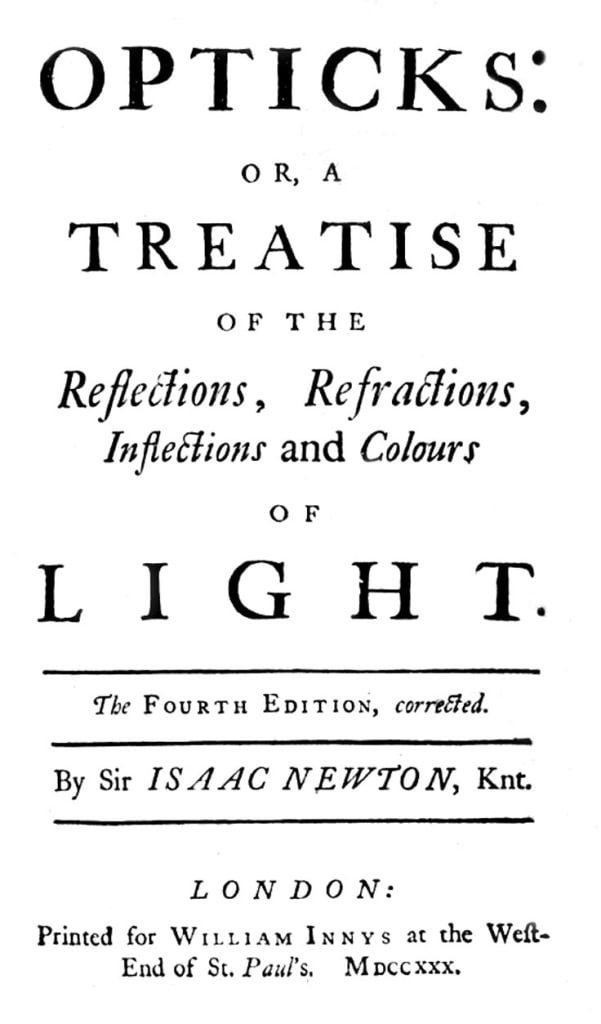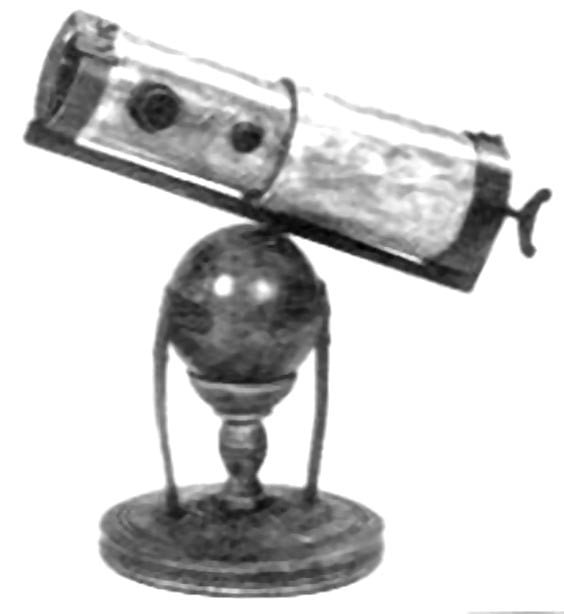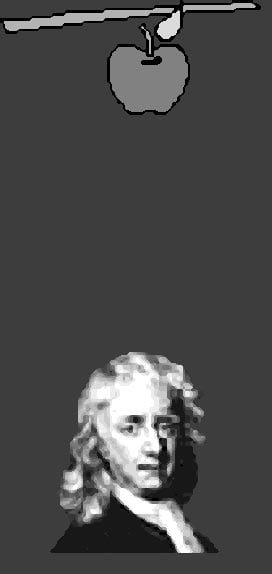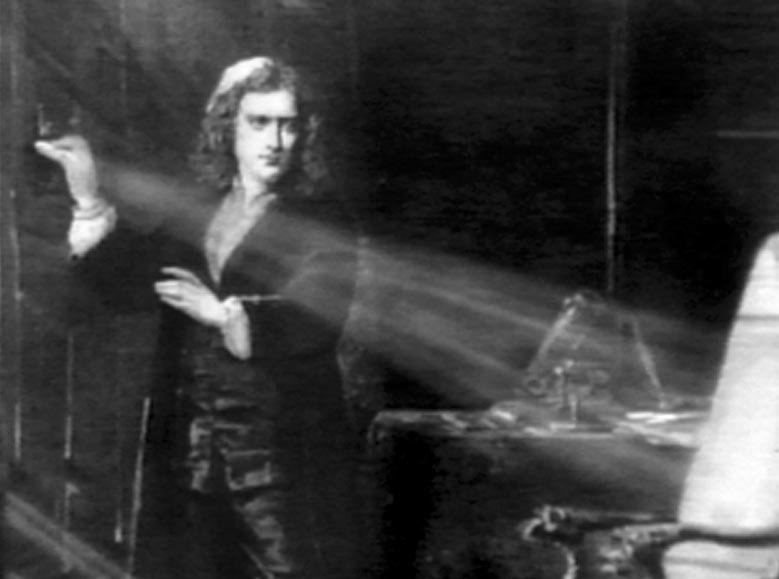It will surprise the readers to know that in early years of his scientific research Isaac Newton paid a great attention to the optical science as if it were going to become his sole occupation. It was later that he revealed his versatile scientific talent in physical law. He had registered optical science as his field of special interest. Then optics was not much known subject and its phenomena was yet to be discovered. What little was known about optics was not scientifically tested and verified.
During 1669-70 Isaac Newton began to deliver lectures with new theories on optics. In the course Newton developed the principle of Reflection and Refractions. It was Newton who said the white colour of the light was formed by seven colours. To prove his principle and theory correct he made a strip of seven colour bands and added a lense and a prism. Seven colour band strip was rotated fast and the prism lense revealed white light. Thus, Newton proved through seven rainbow colours white could be seen or white light could be split in seven colours.

He also proved that the properties and characteristics of a coloured light do not change even when they are separated with a coloured ray. Such rays when meet an object they show their own natural colours. In other words it meant such colour rays when reflect or refract there is no change in their natural colour.

Isaac Newton proved when different objects are subjected to coloured light the colours of the objects and that of light interact and then that reaction is due to the colour of light. For example, if a saffron light beam falls on a red surface the interaction will result in the surface looking yellowish. It means when a coloured surface is exposed to a coloured beam of light the surface would change colour. Two colours mix to create a third colour. The same reaction takes place when the surface of an object meets coloured light. It will appear in a different colour which shall conform to the primary colour and secondary colours formulae. It later came to be known as Newton’s Colour Scheme Principle.

Newton showed his theory practically at work through a reflection telescope. This specially created reflective telescope used to show the changes in the colours when the light rays split or diffused. Then it was called Newtonian Telescope. Through this telescope he was able to establish his Light Ray Principle. In 1671 Royal Society of England asked Isaac Newton to demonstrate his telescope. Newton obliged. He showed the colour changes in surfaces through coloured light scheming. The response was pleasing. Encouraged by this demonstration Newton published his principle and theories related to colour scheming. Later it was brought out in a book form titled Optics or, a Treatise of the Reflections, Refraction, Inflections and Colours of Light.

Some time later a physics scientist called Robert Hook criticized some of the theories of Newton. An enraged Isaac Newton stopped making his reactions and expressions public. Till the death of Robert Hook the two physicists carried animus feelings towards each other and never reconciliated.
In the respect of light photosynthesis Isaac Newton visualized some new theories and reviewed some old theories. The modern day Quantum physics, ‘ Motion of Photons and Binary Particles’ follow to some extent the theories worked out by Newton on light. Up to the period of 1679 the theories propounded by Newton on the light were original but were not verified on the scientific ground. Further down in 1704, under optics Newton wrote principles and theories on light particles.

In 1677 the multi-dimensional talents of Newton turned him towards Mechanical works. Gravitation and effect of the gravitational power on the rotation of the planets on their axis took his attention. He duly included Kepler laws in his study and research. Kepler had propounded some principles on the motion of planets but he had ignored the effects of gravitation. In 1684 Isaac Newton published his research in book form called De Motu Corporum in Gurum (Planetary gravitational principles). Through this research Newton presented explanation on the basic principles of motion laws. Then the work was in preliminary stage.
By 1687 Newton had worked on mathematical laws also. Some of his laws and principles were very original then. Isaac Newton showed his research to a friend named Edmond Haily. He was very impressed with the work of Newton. He advised Newton that his mathematical research was worth being printed in a book form. But Newton had no financial means to do it. He frankly admitted helplessness. Edmond Haily was a good friend and a helpful character. Above all he had full faith in the genuineness of the research work of Newton. He assured Newton that the book must come out and he was ready to bear all the expenses. Thus encouraged by the enthusiasm of friend Haily and his support Isaac Newton got his book Philosphial Natural’s Principia Mathematica published on July 5, 1687. In this work Isaac Newton has propounded his famous three basic principles on motion that became the foundation of modern physics. The book is now known by the name Principia. Today, more than three hundred years later those three basic principles of motion stand as they were and rule the world of science particularly physics. Guided by the same principles man landed on moon and thousands of man-made satellites orbit the earth working wonders for the scientific advancement of human race.

Every science student has to learn Newton’s laws as initiation mantras of physics. The three laws of motion are universally accepted as the fundamental principles. For Gravitation Newton had used the Latin word Gravitas which meant ‘weight’. During those days Latin was a favoured language of academics. All the books of Isaac Newton were published under Latin titles. Along with the motion principles Newton had added analytical evaluation of Boyle’s law that related to the motion of sound through air. The book Principia suddenly made the scientific world look at Isaac Newton with great admiration and awe. Those who understood the real importance of Newton’s law knew in their hearts that the father of physics had arrived.

In the world a legion of the admirers of Isaac Newton had come up. Swedish born Nicholas Fetia-D-Dudellier was a famous mathematician and he came into contact with Newton. They became friends and then became fast friends. Their relationship continued till 1693. The friendship when ended affected Isaac Newton who became mentally sick and unhinged. Some evil minds insinuated that their friendship was not normal. They thought Isaac Newton should be gay since he never cared to marry or tried to gain friendship of a woman.

